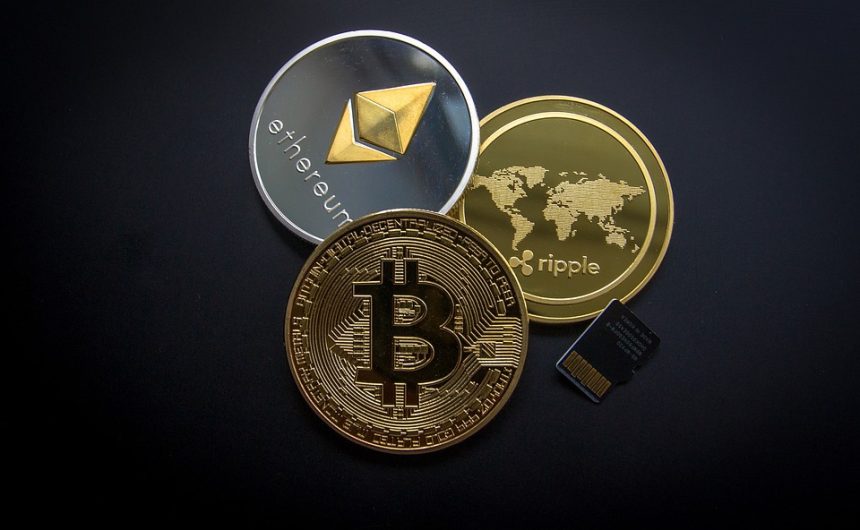Altcoin Innovations: Disruptive Tokens to Watch After Their Debut
The cryptocurrency landscape is constantly evolving, bringing forth innovative solutions aiming to disrupt traditional finance and digital interactions. While Bitcoin (BTC) and Ethereum (ETH) often steal the spotlight, numerous altcoins are emerging with groundbreaking technologies, unique use cases, and potential to revolutionize various sectors. This article will explore some of the most promising altcoins that have recently debuted, highlighting their features and the disruptive potential they hold.
1. Kadena (KDA)
Launched in 2020, Kadena presents a unique blockchain solution that boasts scalability and security. Its multi-chain architecture allows developers to build dApps without the limitations of traditional blockchains. Kadena employs a Proof of Work (PoW) consensus mechanism that is designed to maintain fast transaction speeds while ensuring a decentralized network. The Kadena smart contract language, Pact, introduces formal verification—a feature that helps prevent bugs and vulnerabilities, making it an attractive option for enterprises seeking robust blockchain solutions.
2. Moonbeam (GLMR)
Moonbeam aims to bring Decentralized Finance (DeFi) and non-fungible tokens (NFTs) to the Polkadot ecosystem. As a smart contract platform, it allows developers to deploy existing Ethereum-compatible projects on Polkadot, benefiting from its interoperability and scalability. The seamless integration of Ethereum tools and infrastructure makes Moonbeam an ideal launchpad for projects looking to tap into the rapidly growing Polkadot ecosystem. Its ability to facilitate cross-chain interactions is a significant step towards a more interconnected blockchain environment.
3. Astar Network (ASTR)
Astar Network is another project positioned at the forefront of the multi-chain future. As a Polkadot parachain, Astar aims to help developers build dApps that can interact with various blockchains. Astar’s unique feature is its support for both WebAssembly (Wasm) and Ethereum’s Solidity, giving developers flexibility in choosing the most suitable framework for their needs. Furthermore, Astar’s focus on decentralized autonomous organizations (DAOs) positions it as a key player in the governance of Web3 projects.
4. Render Network (RNDR)
The Render Network is transforming the way digital rendering is accomplished in the creative industries. By harnessing the power of decentralization, Render Network connects artists with unused GPU power worldwide, enabling cost-effective and efficient rendering solutions. This peer-to-peer service not only democratizes the rendering process but also paves the way for enhanced collaboration among artists and studios, providing a sustainable alternative to traditional rendering farms that are often expensive and resource-intensive.
5. Immutable X (IMX)
As the NFT market continues to expand, Immutable X has emerged as a leading layer-2 scaling solution for Ethereum. Immutable X focuses on providing instant trade confirmation, massive scalability, and zero gas fees for minting and trading NFTs, making it accessible for gamers and developers. Its partnership with renowned gaming companies highlights its potential to revolutionize the gaming sector by enabling true ownership of in-game assets, which could change how players interact with video games and digital collectibles.
6. Fantom (FTM)
Fantom is a high-performance, scalable, and secure smart contract platform for DeFi, crypto dApps, and enterprise solutions. By utilizing a unique consensus mechanism called Lachesis, Fantom achieves rapid transaction speeds with low fees, making it exceptionally attractive for developers. With numerous partnerships across various sectors, including supply chain management and healthcare, Fantom is set to disrupt conventional processes and introduce more efficient solutions.
7. Celo (CELO)
Celo is designed with mobile users in mind, making it easier for anyone with a smartphone to access the benefits of blockchain. Its innovative approach to financial inclusion allows users to transact using just their phone number, making it accessible to those without bank accounts. Celo’s focus on sustainability and social impact, including efforts to enable carbon-neutral transactions, positions it as a socially responsible altcoin in the crypto space.
Conclusion
As the cryptocurrency market continues to expand, these altcoins represent just a sliver of the innovative solutions under development. Their unique applications and underlying technologies hold the potential to disrupt established industries, democratize access to financial systems, and create new avenues for digital interactions. With the increasing institutional interest in cryptocurrencies and a growing acceptance of blockchain technology, keeping an eye on these disruptive tokens may yield significant opportunities for investors and enthusiasts alike. As always, however, thorough research and an understanding of market dynamics are essential before venturing into the ever-changing world of cryptocurrencies.





